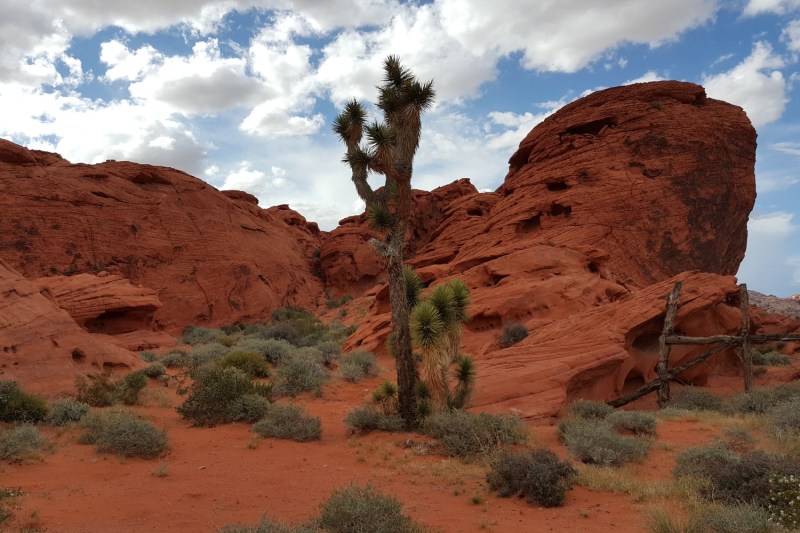Camping at Joshua Tree National Park is a fantastic way to immerse yourself in the beauty of the Southern California desert. Whether you’re a seasoned camper looking for back-to-basics wilderness camping or someone who prefers a more structured setup, this park offers a 9 different campground options. Here’s an in-depth look at Joshua Tree National Park camping.
Here are a few things to keep in mind when you camp at Joshua Tree

When camping at Joshua Tree, come prepared. The park is located in a desert environment, which means that you need to keep a few things in mind:
- Water: Many campgrounds do not have potable water, so bring plenty with you. It’s recommended to bring at least one gallon of water per person, per day.
- Fire Restrictions: Campfires are only allowed in designated fire rings and grills at developed campgrounds. No campfires are permitted in backcountry areas.
- Reservations: October to May is the busiest time of year, so most campgrounds require reservations. First-come, first-served spots often fill up early in the day.
- Weather: The best time to camp is during the cooler months, from fall through spring.
An introduction to Joshua Tree National Park’s campgrounds

Black Rock Campground
- Cost: $20 to $35 per night
- Reservations: Required during busy seasons
- Water: Available
- Best for: RVs and tent campers
Black Rock Campground is one of the more developed sites in Joshua Tree, located near the town of Yucca Valley on the park’s northwestern side. This campground is perfect for families or those who want some amenities nearby. With over 100 campsites, it has flush toilets, potable water, picnic tables, and fire rings. The campground is also popular for its easy access to hiking trails and stunning views of the surrounding desert. If you’re visiting during the peak season (October through May), it’s recommended to make a reservation, as this site can fill up quickly.
Indian Cove Campground
- Cost: $20 per night
- Reservations: Required during peak season
- Water: None available
- Best for: Tent campers and RVs (no hookups)
Tucked away between massive boulder formations, Indian Cove Campground is a favorite among rock climbers. Its striking rock surroundings make it one of the most scenic campgrounds in the park. Indian Cove is located off Highway 62, outside the park’s main boundaries, which makes it a quieter option. With over 100 sites, the campground has basic amenities like picnic tables, fire grates, and pit toilets, but lacks potable water, so be sure to bring your own.
Hidden Valley Campground
- Cost: $20 per night
- Reservations: None (first-come, first-served)
- Water: None available
- Best for: Climbers and adventurous tent campers
Hidden Valley Campground is a smaller, first-come, first-served campground nestled within one of the park’s most popular rock-climbing areas. With just 44 campsites, it fills up quickly, especially on weekends. The lack of reservations and the campground’s proximity to popular bouldering spots makes it ideal for those looking for an adventure-filled stay. It’s primitive, with pit toilets and no running water, so make sure to bring everything you need.
Jumbo Rocks Campground
- Cost: $20 per night
- Reservations: Required during the busy season
- Water: None available
- Best for: Families, hikers, and explorers
If you’re after the iconic views of the Joshua Tree rock formations, Jumbo Rocks Campground is a must-visit. As one of the park’s largest campgrounds with 124 sites, it’s popular with all kinds of campers, both new and experienced. The campground is centrally located and surrounded by huge rock formations, which are perfect for exploring or just enjoying the sunset. Like many other campgrounds in the park, Jumbo Rocks is basic, with only pit toilets and no water.
Ryan Campground
- Cost: $20 per night
- Reservations: None (first-come, first-served)
- Water: None available
- Best for: Hikers and tent campers
Located near Ryan Mountain, Ryan Campground is first-come, first-served site with 31 campsites. It’s a great choice if you’re looking for a quieter area with easy access to popular hiking trails. This campground is ideal for those seeking a simple setup in the heart of the park. As with many of the other campgrounds, Ryan does not provide water, so campers must come prepared with enough to last their stay.
Cottonwood Campground
- Cost: $25 per night
- Reservations: Required during peak season
- Water: Available
- Best for: Families and RV campers
If you prefer a bit more convenience, Cottonwood Campground offers some modern amenities. Located at the southern entrance of the park, Cottonwood has 62 campsites with access to potable water and flush toilets. The campground is situated in a quieter area of the park, providing a more relaxed experience, and it serves as a gateway to some lesser-known hiking trails.
Belle Campground
- Cost: $20 per night
- Reservations: None (first-come, first-served)
- Water: None available
- Best for: Tent campers seeking solitude
Belle Campground is a small, peaceful spot tucked away in the northeastern part of the park. It offers only 18 sites and operates on a first-come, first-served basis. It can fill up quickly, but it’s worth it if you manage to snag one. The campground’s minimal amenities include pit toilets, picnic tables, and fire grates. There is no potable water, so be sure to bring your own supply.
White Tank Campground
- Cost: $20 per night
- Reservations: None (first-come, first-served)
- Water: None available
- Best for: Stargazers and quiet campers
Located near the Twentynine Palms entrance of the park, White Tank Campground is another small and quiet option. White Tank is known for its proximity to Arch Rock, one of the park’s most photographed natural landmarks. The campground is primitive, with pit toilets and no water.
Sheep Pass Group Campground
- Cost: $40 to $50 per night (group sites only)
- Reservations: Required
- Water: None available
- Best for: Large groups and gatherings
If you’re planning to camp with a large group, Sheep Pass Group Campground is designed specifically for that purpose. With 7 group sites, it can accommodate groups of 10 to 60 people. This is the only campground in the park dedicated to large group camping, so it’s ideal for gatherings or events. There is no potable water, so be sure to come prepared.
With nine distinct campgrounds to choose from, camping at Joshua Tree National Park has something for everyone. From the more developed sites like Black Rock and Cottonwood to the more adventurous spots like Belle and White Tank, Joshua Tree National Park has a ton to offer.




